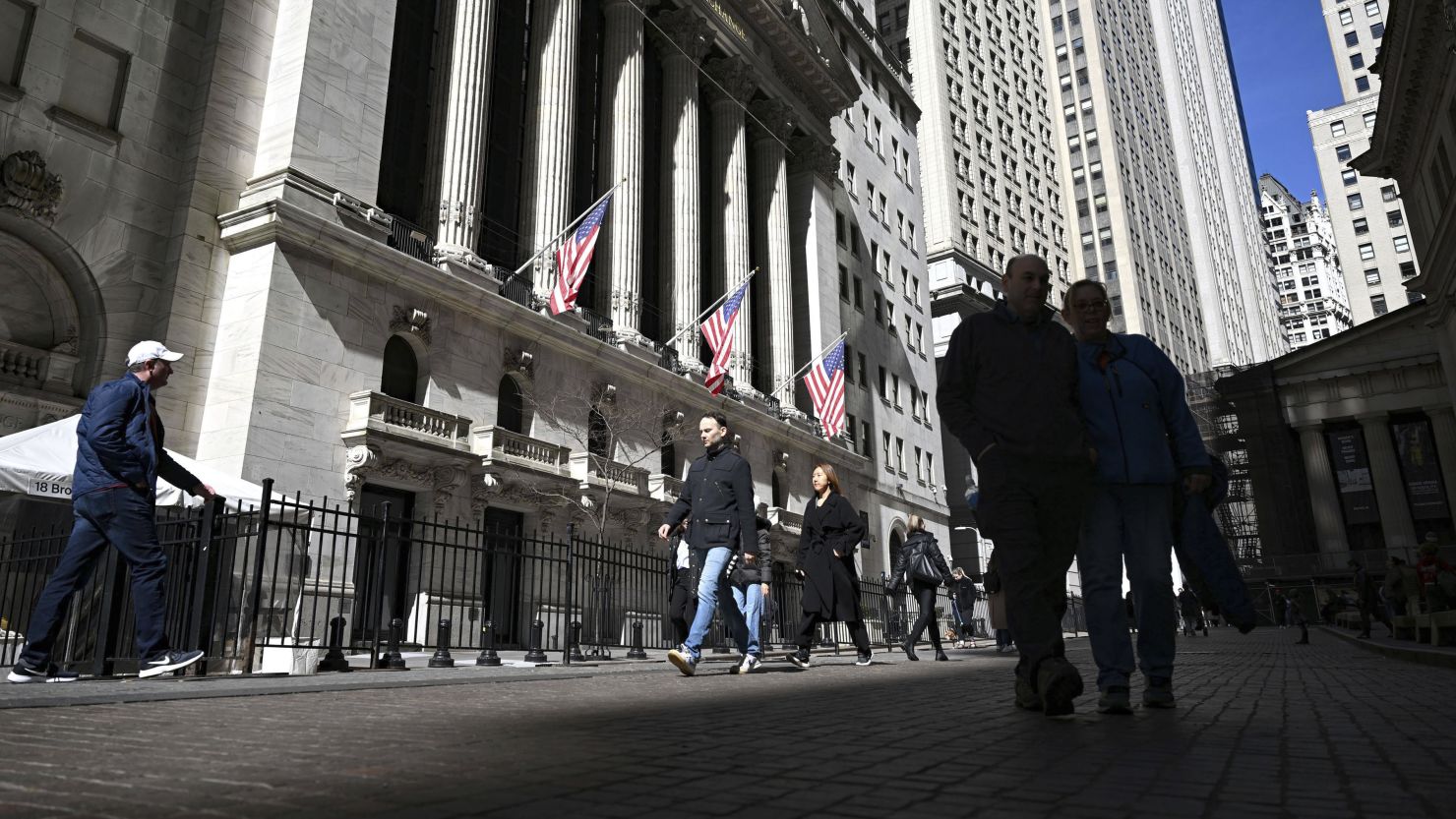A version of this story first appeared in CNN Business’ Before the Bell newsletter. Not a subscriber? You can sign up right here. You can listen to an audio version of the newsletter by clicking the same link.
When the bulls come out to play, the bears are ready to pounce.
The S&P 500 reached its 17th record-high close of 2024 on Tuesday, though it has since pulled back a bit from that milestone on renewed inflation concerns. The Dow Jones Industrial Average index has also set repeated record highs this year, and the Nasdaq Composite closed in February at a record high for the first time since 2021. Gold and bitcoin have also surged to all-time highs.
Unsurprisingly, several flashing indicators suggest that investors are feeling good about the market:
• CNN’s Fear & Greed Index: The indicator, which measures seven barometers of market sentiment including the VIX, Wall Street’s most well-known measure of expected stock volatility, is in “greed” territory.
• AAII Investor Sentiment Survey: The latest reading, which surveys individuals weekly on where they see the stock market headed in the next six months, showed that roughly 46% or investors think the market will be heading in a “bullish” direction within that time frame. The historical average for such sentiment is 37.5%.
• Charles Schwab Trader Sentiment Survey: About 53% of respondents to the most recent survey reported a bullish outlook for US stocks, a jump from 32% during the fourth quarter of 2023. That’s the highest level of bullishness seen since the survey launched in 2021.
But these indicators of market optimism could suggest trouble ahead. Market sentiment is often seen as a contrarian indicator. That means that when the herd is optimistic, money managers take it as a sign that stocks will fall, and vice versa.
Part of that reasoning is because investors, and in turn market sentiment, aren’t always rational — a fear of missing out or of taking deep losses can drive their decisions, meaning they can tend to buy at market highs and sell at lows. As a result, cheer on Wall Street doesn’t always mean there’s actual support for a continued rally.
The Investors Intelligence bull-bear ratio is another indicator that measures the level of optimistic versus pessimistic advisers. Yardeni Research notes that the ratio fell to a cyclical low of 0.57 during the week of October 11, 2022, the lowest reading since the financial crisis. The prior bear market reached its bottom the following day.
“We turned bullish in early November (2022), figuring that sentiment was much too bearish and that the most widely expected recession of all times would continue to be a no-show,” the researchers wrote in a Wednesday note.
Fast forward, the bull-bear ratio rose this past week to 4.20, the highest reading since December 2017, according to Yardeni Research.
Still, stocks have gained on more than just good vibes this year.
A slate of data released in recent months shows that the economy remains resilient, despite interest rates staying at a 23-year high since last July. The economy added a robust 275,000 jobs in February, according to data from the Bureau of Labor Statistics. In January, the Personal Consumption Expenditures price index, the Fed’s preferred inflation gauge, slowed to its slowest pace in more than two years.
That data has kept the Fed on track to ease rates this year, with markets widely expecting the first cut to take place in June or July, according to the CME FedWatch Tool.
The recent earnings season also demonstrated the economy’s strength. Fourth-quarter earnings for S&P 500 companies are on track to grow 4.1% from the year before, according to FactSet data.
Another inflation gauge came in hot for February
Rising energy prices helped to fuel yet another hot inflation reading for February, reports my colleague Alicia Wallace.
A closely watched gauge of US wholesale inflation rose at its fastest pace in months, according to new data released Thursday. While a seasonal energy price surge is at the root of the gain, and less-volatile categories are showing signs of a continued cooldown, the latest Producer Price Index is yet another reminder of the arduous process to rein in inflation.
The PPI, which measures the average change in prices that producers and manufacturers pay to suppliers, rose 1.6% for the 12 months ended in February, leaping from a 1% increase in January, according to Bureau of Labor Statistics data. Economists had projected an annual gain of 1.1% for February.
On a monthly basis, PPI rose 0.6%. That’s double economists’ expectations for prices to rise 0.3% for the month. Energy prices soared 4.4% from January and registered the highest monthly increase since August 2023.
PPI captures average price shifts before they reach consumers and serves as a potential signal for the prices consumers ultimately end up paying.
“The February PPI report was a mixed bag,” Gus Faucher, chief economist for PNC Financial Services, wrote in a note issued Thursday. “Inflationary pressures remain in the pipeline, but with supply and demand continuing to normalize after the pandemic, inflation continues to gradually slow.”
Retail sales rebounded in February
Spending at US retailers rebounded last month as Americans shelled out more for gasoline, reports my colleague Bryan Mena.
Retail sales at stores, online and in restaurants rose 0.6% in February from the prior month, up from January’s revised 1.1% decline, the Commerce Department reported Thursday. That was slightly below economists’ expectations. The figures are adjusted for seasonal swings but not inflation.
January’s sharp decline was mostly attributed to the cold weather keeping consumers hunkered down at home. The broader US economy remains on a strong footing, with employers continuing to hire and Americans still raking in strong wage gains. Retail spending has increased in seven of the past 10 months through February.
Sales were up across most categories last month, rising the most at home improvement stores, by a solid 2.2%. In February, car sales climbed 1.8%, purchases of electronics and appliances increased 1.5% and sales at restaurants rose 0.4%.
Gas station sales increased 0.9% in February from January.
Meanwhile, furniture sales dropped last month, falling 1.1% from January. Sales at grocery stores, clothing retailers and online were also down in February.








